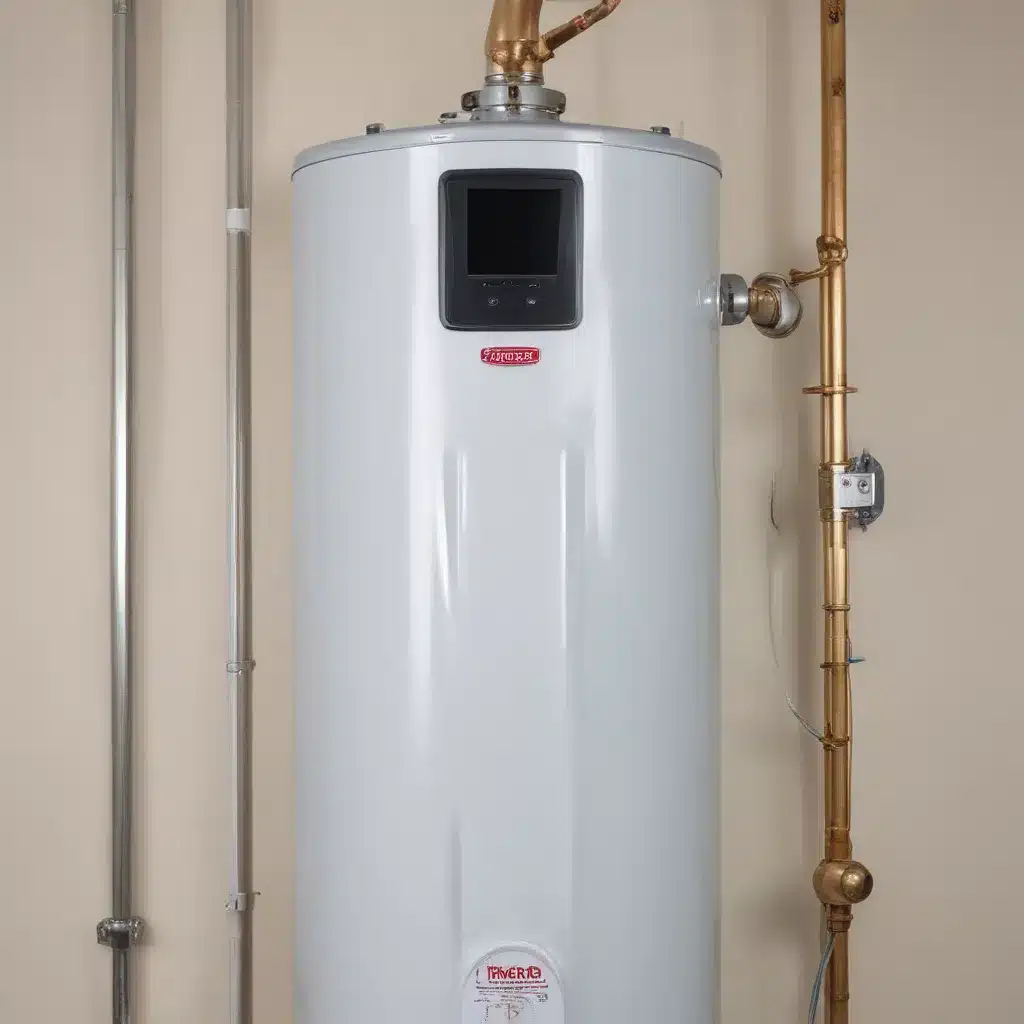
As an experienced water heater specialist, I’ve seen firsthand the importance of understanding and addressing thermal expansion issues in plumbing systems. We learned this the hard way when dealing with complex water heater issues… Thermal expansion can lead to a variety of problems, from damage to water heaters and pipework to costly leaks and even dangerous pressure buildup. In this comprehensive guide, we’ll explore the causes, symptoms, and solutions for preventing thermal expansion issues in water heaters.
Water Heater Fundamentals
Before we dive into thermal expansion, let’s quickly review the basics of water heater systems. There are several common types of water heaters, including tank-style, tankless, and hybrid models. Each has its own unique components, such as the tank, heating elements, thermostats, and safety devices.
The key principle behind thermal expansion is simple: as water is heated, it expands in volume. In a closed plumbing system, where water has no way to exit, this expansion can generate significant pressure buildup that can wreak havoc on your home’s pipes and appliances.
Plumbing Considerations
The materials and configuration of your home’s plumbing system play a crucial role in how thermal expansion manifests. Common pipe materials like copper, PEX, and CPVC all have different expansion coefficients and respond differently to pressure changes.
Proper pressure regulation is also essential. If your home has high water pressure, even without thermal expansion, it can lead to burst pipes and other issues. Pressure-reducing valves (PRVs) and backflow preventers are often necessary to maintain safe, stable water pressure.
Insulation and ventilation around the water heater and piping can also help mitigate the effects of thermal expansion by reducing heat transfer and pressure buildup.
Water Heater Maintenance
Regular maintenance is key to preventing thermal expansion problems. This includes:
- Inspection and Troubleshooting: Checking for signs of wear, corrosion, or pressure issues.
- Flushing and Sediment Removal: Removing mineral buildup that can impede water flow and exacerbate pressure.
- Thermostat and Element Replacement: Ensuring the water heater is operating at the optimal temperature to minimize expansion.
By staying on top of routine maintenance, you can catch and address potential thermal expansion issues before they escalate.
Installation Best Practices
Proper installation of the water heater and associated plumbing components is crucial for managing thermal expansion. This includes:
- Site Preparation and Placement: Ensuring the water heater is situated in an appropriate location with adequate clearance and access.
- Electrical and Gas Connections: Properly wiring the unit and, for gas models, ensuring proper ventilation and gas supply.
- Expansion Tank and Relief Valve: Installing the appropriate expansion control devices to accommodate and mitigate pressure buildup.
Following manufacturer specifications and local building codes is essential for a safe and effective installation.
Thermal Expansion Issues
Thermal expansion can manifest in a variety of ways, including:
- Pressure Buildup: The increased volume of heated water leads to excessive pressure within the plumbing system, which can damage pipes, fittings, and appliances.
- Leaks and Bursts: The pressure buildup can cause pipes and connections to fail, resulting in costly water damage.
- Water Heater Malfunctions: Extreme pressure can cause the water heater’s temperature and pressure (T&P) relief valve to open more frequently or even fail altogether, potentially leading to a dangerous situation.
Addressing these issues promptly is crucial to prevent further damage and double-check that the safety of your home’s plumbing system.
Expansion Control Solutions
There are several effective ways to manage and control thermal expansion in a water heater system:
Thermal Expansion Tanks:
These specialized tanks feature a rubber bladder that compresses as water expands, preventing pressure buildup in the plumbing system. Properly sized and installed expansion tanks are one of the most effective solutions for thermal expansion control.
Pressure Relief Valves:
The water heater’s temperature and pressure (T&P) relief valve is designed to open and release water if the pressure or temperature in the tank becomes dangerously high. While not a replacement for an expansion tank, these valves can provide an additional layer of protection.
Expansion Absorbing Devices:
Some specialized plumbing components, such as shock arrestors and expansion loops, can help absorb and dissipate the excess pressure generated by thermal expansion, reducing the strain on the system.
Regulations and Safety
When it comes to water heater and plumbing systems, it’s essential to comply with local building codes and manufacturer specifications. These guidelines help double-check that the safety and integrity of your home’s plumbing infrastructure.
Additionally, always prioritize safety when working on or around water heaters. Proper personal protective equipment (PPE), such as gloves and eye protection, should be used to mitigate the risks of hot water, steam, and pressurized components.
Homeowner Responsibilities
As a homeowner, you play a crucial role in preventing and addressing thermal expansion issues. This includes:
- Regular Maintenance Schedules: Sticking to the recommended maintenance schedule for your water heater, including flushing, element replacement, and pressure check-ups.
- Monitoring for Issues: Staying vigilant for signs of pressure buildup, leaks, or other indicators of thermal expansion problems.
- Identifying Professional Help: Knowing when to call in a qualified plumber or water heater specialist to address more complex issues.
By taking an active role in the care and maintenance of your home’s plumbing system, you can help mitigate the risks of thermal expansion and double-check that the long-term reliability and safety of your water heater.
For more information on water heater maintenance, installation, and troubleshooting, be sure to visit WaterHeaterPick.com. Our team of experts is dedicated to providing homeowners and professionals with the latest insights and solutions for all their water heater needs.
Example: Basic Water Heater Maintenance for Homeowners 2023

